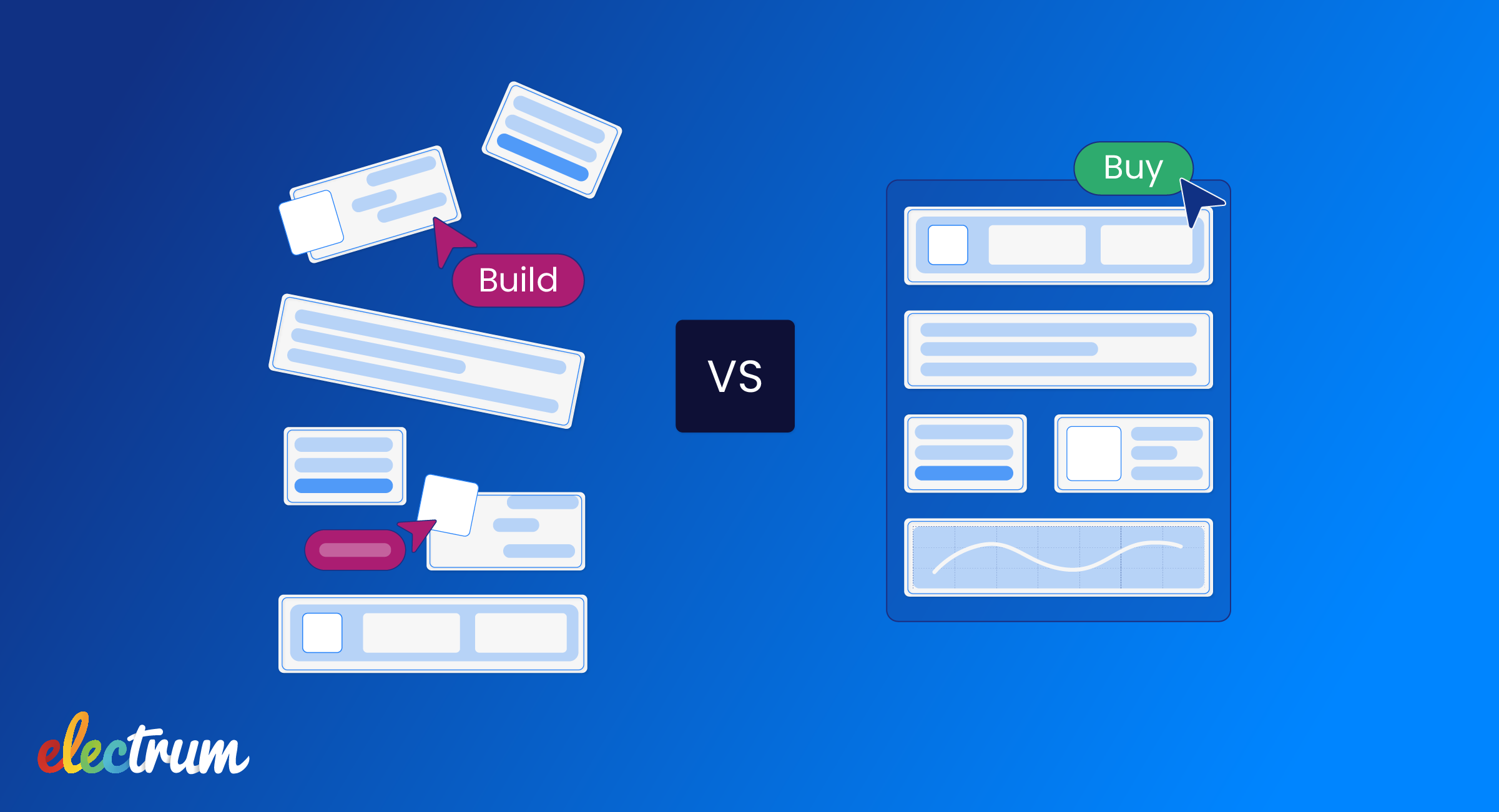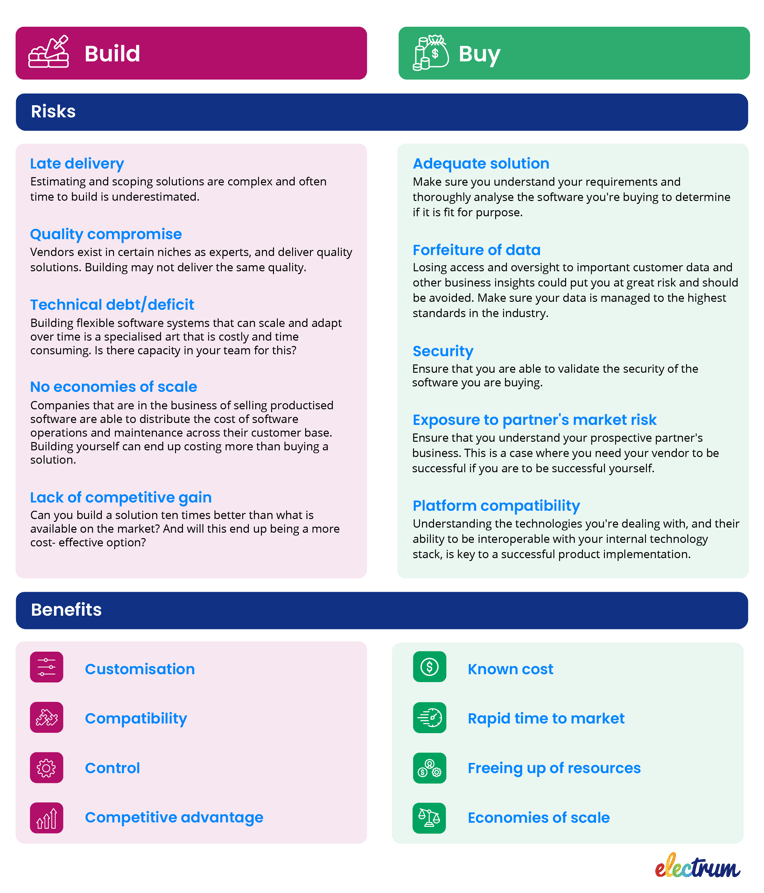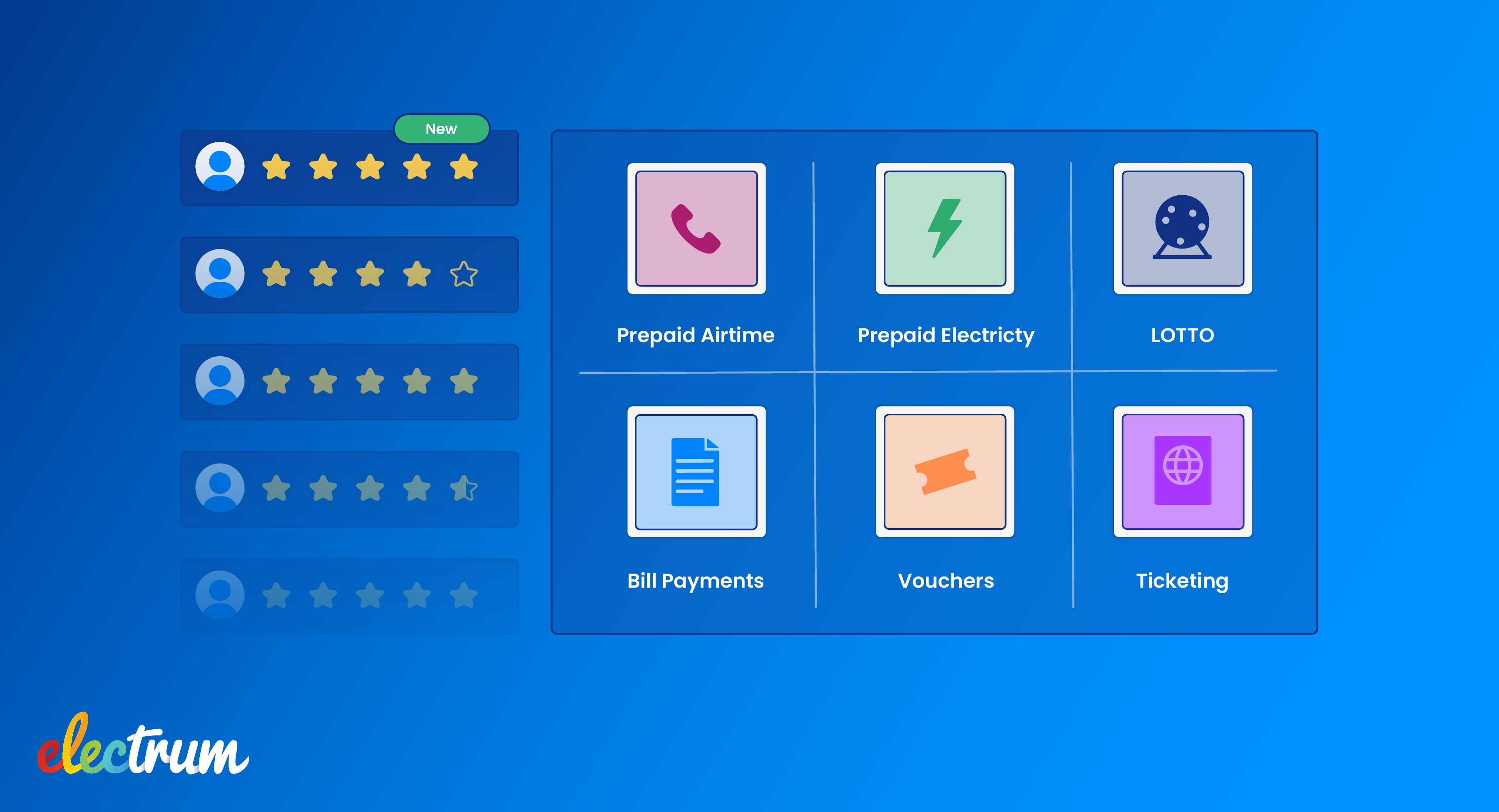
It’s not a simple decision, but if you’re at a build/buy crossroad, this analysis will help. We lay out the considerations and consequences for both sides of the debate.
You're a business leader in an enterprise organisation that has just made a strategic decision to focus on a profitable market segment. It's a digital opportunity that requires a significant technology investment and you're slightly behind the curve in capitalising on the opportunity. You're anxious to take something to market quickly in the fear of losing further market share amongst your customer base and find yourself conflicted about whether to support a build or buy strategy.
The debate about whether to build or buy is a loaded one that evokes a lot of emotion and strong opinions. It's a complex topic with many logical layers that need to be navigated, often leaving key decision-makers unsure of the best route for their businesses.
Let’s unpack the main questions you are considering when trying to make this decision, and weigh up the risks of both strategies.
1. Can you do it yourself?
Your current business is likely based on the premise that it addresses a certain problem that your customers pay you to solve for them. Understanding this problem statement is an important factor in accurately comparing the pros and cons of each option. Defining this problem statement will also help you to classify whether this problem is common to other businesses or whether it is unique and specific to your organisation. If you decide to build, you have to ensure that you build something that truly differentiates your business.
Reinventing the wheel by building technology solutions that aren't sufficiently differentiated in value wastes precious financial and human resources. This also means that you are paying a significant amount in opportunity costs by monopolising resources that could've been used more productively elsewhere. Having to hire additional skills that are not aligned to your core business could cost you and create more problems than solutions. In addition to the possibility of lost opportunity costs, you risk compromising on quality if you do not have a thorough understanding of the problem domain and technology involved.
Be aware that building also opens you up to the risk of late delivery. Estimating and scoping a new product build is time consuming and key aspects can be overlooked. Unless the problem is extremely well understood and the requirements are crystal clear, you always run the risk of overshooting the runway. If you're already concerned that your build time-to-market will jeopardise your chances of success, this risk needs to be carefully quantified and understood as it could make or break your decision.
So, should you build the solution yourself? Unless you are certain that your team can deliver a unique solution that doesn’t already exist, then look at buying or partnering. Vendors that produce software in a particular niche are well versed in problem statements and employ fit-for-purpose technology to solve problems. You're generally more assured of the quality of a product you'll buy than the quality of a product you're yet to build.
2. Is it cheaper to build?
Comparing the costs of the two approaches can be a daunting task. The cost associated with building is particularly difficult to quantify accurately. It can be an expensive exercise to develop software for large and complex solutions. Often the approach to calculating this cost is oversimplified because the fully-burdened cost of resources are not well understood.
The cost of buying is usually easily understood, provided the licensing model is not overly complicated, however, a poor understanding of the vendor costing model can also lead to inaccuracies. The simpler the pricing model, the better for this purpose. But watch out for hidden costs, such as volume licenses.
For both approaches, also consider the cost of technology infrastructure. With SaaS (Software as a Service) solutions becoming the norm, you often get the software and infrastructure included in your fees when buying, whilst with a build, you need to consider the additional costs of hosting and running the software on cloud or on-premise infrastructure.
Also, don't forget to factor in the cost of maintaining the application over time. Whilst a vendor will have a well established product process, including releases of bug fixes and improvements, you cannot simply remove resources from an internally-built project once it is completed. Software is dynamic in nature and will need to be maintained continuously by a team of people. Technical debt refers to the accumulation of substandard technology systems and their associated code bases. If not managed appropriately, technical shortcuts (quick fixes) can produce headaches down the line when system enhancement, improvement or expansion is required. Building flexible software systems that can scale and adapt over time is a specialised art that is costly and time consuming. When proper architecture is compromised, technical debt arises which can lead to a technical deficit, a term introduced to describe the lack of talent and finances required to see the project through to completion – ultimately leading to lost time and money.
Electrum’s rule of thumb is that you must be able to build a solution ten times better than what you can buy outright in the market. If you're not able to achieve this, it is doubtful that you'll receive the competitive edge to justify the cost, time, and risk of building the software yourselves.
3. Can your team do it faster?
Time-to-market is one of the main factors that needs to be carefully considered when deciding to buy or build. Of primary concern is your opportunity cost. Your cost to build is one thing, but the lost revenue that you would have accrued by building and deploying a solution rapidly instead of undertaking a time-consuming build might overshadow the direct cost altogether. The opportunity cost not only includes lost revenue, but also a loss in market share as a result of late entry into the market. If you're not sure you can gain that market share back with a superior product, you'll never regain that revenue and this needs to be reflected in your upfront analysis.
Further aspects for consideration on the time horizon include whether the problem you're solving is a threat to the livelihood of your company and its long-term health, or just a nagging annoyance that could be improved.
Provided a product solution exists in the market, and the need is pressing for your company's overall well-being, you'll be best off buying as you can take the solution to market faster.
4. Finally, have you weighed up all the risks?
To summarise, both approaches carry their own degree of risk. This speaks to the likelihood that something will go wrong and the subsequent impact that this will have on your business. Assessing the possible risks and classifying their impact will guide you in deciding which factors matter the most in choosing your strategy.

Choosing to buy or partner on a solution means a faster time to market, with a quality end product. Companies such as Electrum specialise in developing the best possible solutions and offer expertise, around the clock support, and secure up-to-date software. If you would like to chat about what solutions we can offer your business, contact us here.
Electrum Payments
Electrum provides transaction processing solutions to banks, retailers, and MNOs, helping them to find better ways to transact. As a vibrant and innovative SaaS company, we deliver industry-leading expertise and technology to solve real problems every day.
Electrum Newsletter
Quarterly insights and news to help you keep up with the latest changes in the payments landscape







